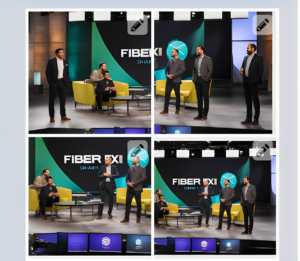FiberFix: A Tale of Tenacity and Triumph on Shark Tank
In the annals of entrepreneurial ventures, few products capture the imagination quite like FiberFix, a repair wrap of such strength and versatility that it boldly claims to surpass the conventional duct tape. Featured in the 2013 episode of ABC’s “Shark Tank,” the product, presented by founders Spencer Quinn and Eric Child, swiftly became a paragon of innovation and American ingenuity.

The Essence of “Shark Tank” Before delving into the FiberFix odyssey, one must first appreciate the essence of “Shark Tank.” This televised Colosseum of commerce, where entrepreneurs pitch their dreams to a panel of investors – the eponymous “Sharks” – is not just a show but a modern-day gladiatorial arena for business prowess. The criteria for selection are rigorous, hinging on originality, marketability, and the potential to disrupt industries.
The FiberFix Phenomenon On “Shark Tank,” Quinn and Child’s demonstration was nothing short of theatrical. Imagine, if you will, a scene where a hammer, reassembled using FiberFix from mere wooden shards, shatters cinder blocks. This was not a mere display of adhesive prowess; it was a spectacle of resilience, a testament to FiberFix’s claim of being an ultra-durable, industrial-grade tool.
The application of FiberFix speaks to its simplicity and efficacy. A piece cut from the roll, soaked in water, then wrapped around the damaged item, metamorphoses in mere minutes from a malleable wrap to a rock-solid bond, capable of being sanded and painted to artistic perfection.
Drama in the Tank The venture into the Shark Tank was as dramatic as the product itself. Seeking $90,000 for a 10% stake, Quinn and Child were met with a feeding frenzy from the Sharks. Kevin O’Leary, ever the astute financier, proposed a royalty deal sans equity. Robert Herjavec mirrored the founders’ initial offer, but it was Lori Greiner, with her QVC Midas touch, who presented the golden offer of $250,000 for 18% equity.
In a denouement worthy of a Shakespearean play, a deal was struck with Greiner – $120,000 for 12% equity. This was not just a financial transaction; it was a partnership envisaging a future where FiberFix would become a household name.
Post-Tank Ascendancy Post “Shark Tank,” FiberFix’s trajectory was meteoric. The day after the episode aired, Quinn’s pronouncement of their QVC triumph – selling 45,000 rolls in 10 minutes – was a testament to their burgeoning success. Their expansion into major hardware stores and the staggering leap from $300,000 to $6 million in sales in mere months is a narrative of extraordinary growth.
Child’s reflection on the journey, equating FiberFix’s success with the continuation of American innovation, touches upon a deeper ethos. This is more than a story of a product; it’s a chronicle of aspiration, ingenuity, and the relentless pursuit of a dream.
The Original Pitch and Its Aftermath The original pitch on “Shark Tank” was a masterclass in persuasion. Demonstrating FiberFix’s utility on a broken shovel handle, Quinn and Child captivated the Sharks with a narrative of practicality and potential. The subsequent bidding war was not merely about a product; it was an endorsement of a vision that FiberFix represented – the potential to revolutionize the way we view repairs.
Lori Greiner’s and Kevin O’Leary’s enthusiasm for FiberFix encapsulated the product’s essence – a solution to pervasive problems and an indispensable addition to any toolbox.